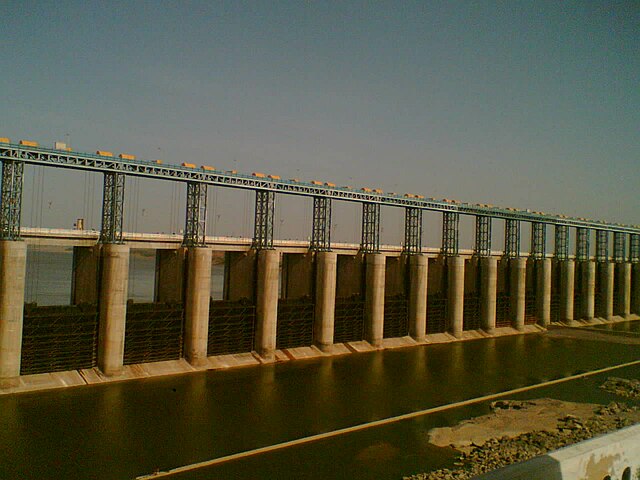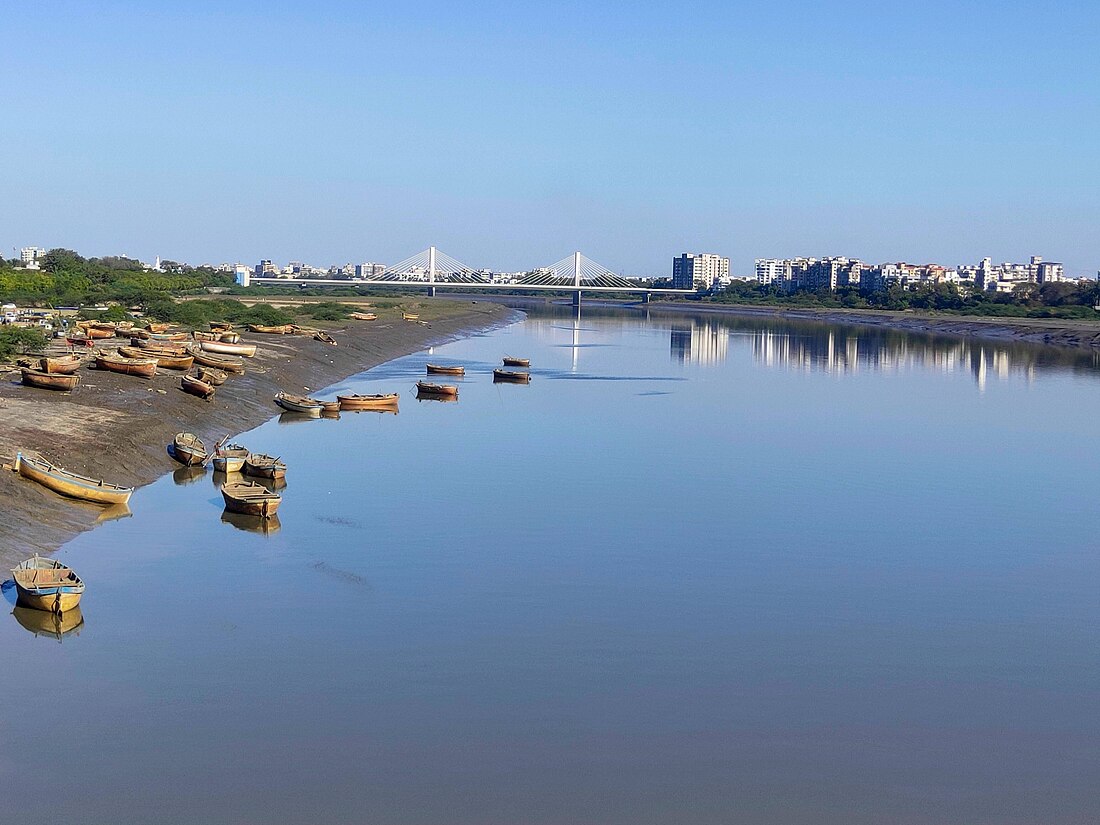Tapti River
River in India From Wikipedia, the free encyclopedia
The Tapti River (or Tapi) is a river in central India located to the south of the Narmada river that flows westwards before draining into the Arabian Sea.[2] The river has a length of around 724 km (450 miles) and flows through the states of Maharashtra, Gujarat and Madhya Pradesh.[2] It flows through the city of Surat, in Gujarat, and is crossed by the Magdalla, ONGC Bridge.[3]

| Tapti Tapi | |
|---|---|
 | |
 | |
| Location | |
| Country | India |
| State | Madhya Pradesh, Maharashtra, Gujarat |
| Physical characteristics | |
| Source | Multai, Madhya Pradesh |
| Mouth | Gulf of Khambhat (Arabian Sea) |
• location | Dumas, Surat, Gujarat |
| Length | 724 km (450 mi)approx. |
| Basin size | 62,225 square kilometres (24,025 sq mi) |
| Discharge | |
| • location | Dumas Beach[1] |
| • average | 489 m3/s (17,300 cu ft/s) |
| • minimum | 2 m3/s (71 cu ft/s) |
| • maximum | 9,830 m3/s (347,000 cu ft/s) |
| Basin features | |
| Tributaries | |
| • left | Girna, Nesu, Amravati, Buray, Panjhara, Bori, Waghur, Purna, Mona, Sipna |
| • right | Vaki, Aner, Arunawati, Gomai |
On 7 August 1968, before the construction of the Ukai Dam to bring its waters under control and provide hydroelectric power, the Tapti River overflowed its banks during heavy rains in the monsoon season. More than 1,000 people drowned in the flood,[4] and the city of Surat was submerged beneath 10 feet of water for several days.[5] After the floodwaters receded, at least 1,000 more people died in Gujarat during a cholera epidemic from the contamination of the drinking water.[6] The Tapti basin covers parts of Madhya Pradesh, Gujarat and Maharashtra.[citation needed]
Course
The Tapti River rises in Multai, in Madhya Pradesh, and with a total length of 724 km[7] is the second longest west-flowing river in India, after the Narmada River.[8] The Tapti travels east to west and flows through the Indian states of Maharashtra, Gujarat and Madhya Pradesh.[7] It drains into the Gulf of Khambhat, in the Arabian Sea, in Gujarat.[2] The Tapti River has 14 major tributaries, four are right bank and ten are left bank tributaries. The right bank tributaries originate in the Satpura ranges and include Vaki, Aner, Arunawati, and Gomai.[7] The left bank tributaries include Nesu, Amravati, Buray, Panjhara, Bori, Girna, Waghur, Purna, Mona, and Sipna. They originate in the Gawilgarh hills, Ajanta hills, the Western Ghats, and Satmalas.[7]
Etymology
The river is supposedly named after the goddess Tapati, the daughter of Surya, the Sun god and Chhaya. Tapati is the sister of Shani, Bhadra, Yamuna and Yama.[9]
See also
References
External links
Wikiwand - on
Seamless Wikipedia browsing. On steroids.

